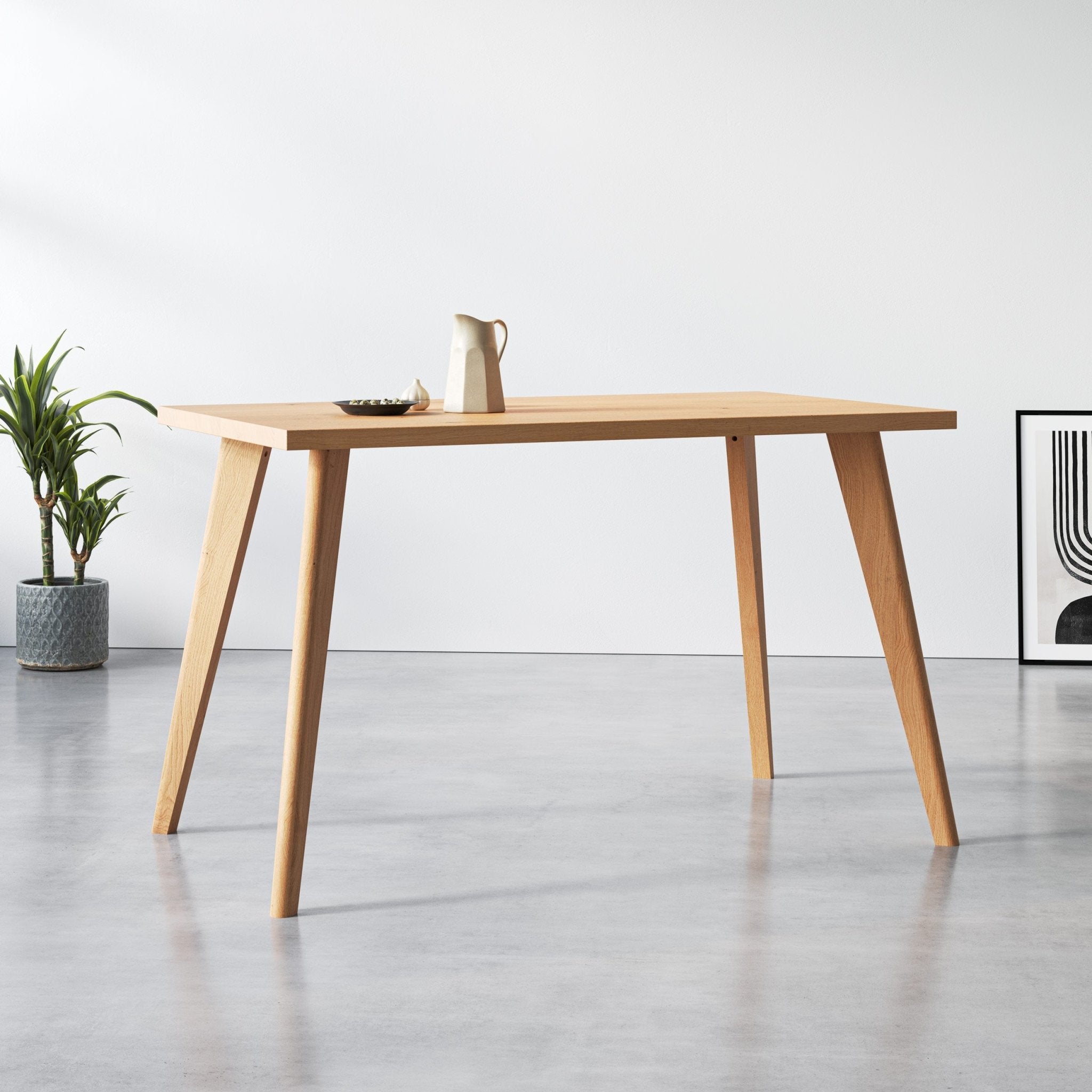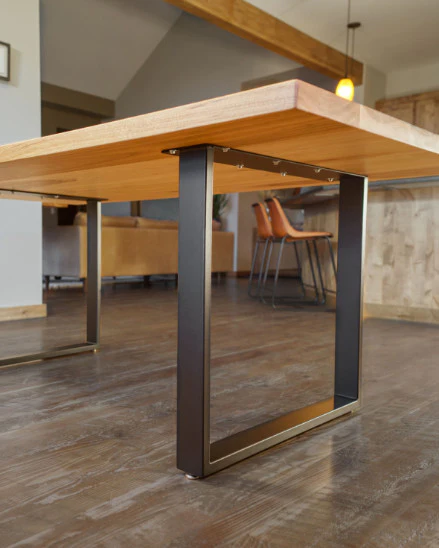Trick Factors to Remember for Table Legs Timber Choices
When selecting timber for dining table legs, a number of essential factors require mindful factor to consider to make sure both capability and aesthetic appeal. The choice of timber type, identified by its sturdiness and one-of-a-kind grain patterns, plays a crucial role in the general design and long life of the item.
Timber Types and Qualities
When choosing wood for dining table legs, it is vital to recognize the special characteristics of numerous timber kinds. Different timbers provide unique advantages and downsides, influencing both the longevity and aesthetic charm of the finished item.
Oak, understood for its remarkable sturdiness, also includes a famous grain that can include character to the table. Cherry timber, with its abundant color that strengthens over time, offers an extravagant look however might require even more upkeep to avoid scratches.
On the other hand, softwoods like ache and fir are a lot more inexpensive and easier to deal with, yet they are less resilient than woods. Pine is lightweight and features a warm, rustic look, making it a popular option for laid-back dining setups. It is a lot more prone to damages and scrapes.
Understanding these qualities will aid in making an educated decision to make sure the legs of the table meet both aesthetic and useful needs.
Grain Patterns and Looks
Selecting the right grain pattern can significantly improve the aesthetic appeal of dining table legs. The wood's grain is not just an aesthetic characteristic; it imparts a special individuality and beauty per piece. Various timber species show distinct grain patterns, ranging from the straight lines of maple to the complex swirls of oak and the striking figure of walnut. These patterns can stimulate numerous styles, from rustic to modern, making it vital to choose a grain that straightens with the total style of the dining space.
Furthermore, the orientation and scale of the grain can influence the perceived dimension and style of the table. For example, larger, much more obvious grains might provide a strong, remarkable impact, while finer, subtler grains can develop a fine-tuned, underrated appearance. Furthermore, the completing procedure can further improve these patterns, emphasizing the natural appeal of the timber and drawing out rich hues.
Eventually, the option of grain pattern need to integrate with various other design elements, such as the table top and bordering furnishings, ensuring a natural aesthetic that elevates the eating experience. Thoughtful option of timber grain not only adds to the table's beauty however also shows the owner's taste and design.
Longevity and Stamina
The longevity and toughness of eating table legs are extremely important factors to consider for making sure longevity and security in any type of eating space. Selecting the right wood is critical, as different varieties show differing levels of durability.

Ultimately, spending in high-grade wood and robust building and construction approaches will generate a table that stands the test of time, while giving a dependable structure for plenty of dishes shared amongst family members and pals. Prioritizing durability and stamina ensures that your dining table continues to be useful and visually pleasing for several years to find.
Upkeep and Care
Proper upkeep and care are important for maintaining the durability and stamina of table legs made from wood. Routine cleansing is vital; making use of a soft, wet fabric guarantees that dust and particles do not build up, which can bring about scrapes and dullness. It is suggested to avoid severe chemicals or unpleasant products that might damage the surface.
Additionally, using a suitable timber gloss or wax occasionally can aid preserve the luster and safeguard the wood from wetness and spills. It is vital to follow the maker's suggestions concerning the kind of product to use, as certain surfaces might respond detrimentally to specific chemicals.
Humidity and temperature level fluctuations can also influence wood table legs, creating them to warp or split. It's ideal to place the table away from straight sunshine and warmth sources. Attending to these immediately can avoid additional damages. if the table legs have any scrapes or damages.
Finally, regularly checking the joints and screws for rigidity is very important to keep structural honesty (Dining Table Legs Wood). By sticking to these maintenance methods, house owners can guarantee their wood table legs remain functional and attractive for years to come
Environmental Considerations
When choosing timber for eating table legs, it's essential to take ecological factors to consider into account. The sourcing and sustainability of right here wood are vital in lessening ecological influence. Choosing wood from licensed sources, such as those backed by the Woodland Stewardship Council (FSC), makes certain that the lumber is collected sensibly, advertising woodland preservation and biodiversity.

Furthermore, neighborhood sourcing of wood lowers transport discharges, sustaining neighborhood economic situations while minimizing ecological impact. It is likewise advisable to be knowledgeable about the wood's therapy and completing processes, as certain chemicals can be dangerous to both human health and wellness and the environment. By focusing on sustainable wood options, consumers can contribute to ecological preservation while appreciating the durability and elegance of their dining table legs.
Final Thought
In conclusion, choosing timber for see it here dining table legs necessitates mindful factor to consider of different elements, including timber types, grain patterns, and durability. The aesthetic charm of unique grain patterns can boost the total layout, while the toughness of hardwoods ensures longevity. Maintenance requirements and ecological sustainability more influence timber choices, stressing the relevance of sourcing from certified or redeemed materials. A notified option procedure inevitably adds to a practical and visually appealing dining space that lines up with sustainable techniques.
When selecting timber for dining table legs, a number of critical factors call for cautious factor to consider to guarantee both performance and aesthetic appeal.Appropriate upkeep and treatment are essential for maintaining the resilience and stamina of eating table legs made from wood.When choosing timber for eating table legs, it's necessary to take environmental useful site considerations into account. By focusing on sustainable timber selections, consumers can contribute to environmental preservation while enjoying the sturdiness and appeal of their dining table legs.
In verdict, choosing wood for eating table legs necessitates cautious factor to consider of various aspects, consisting of timber kinds, grain patterns, and sturdiness. Dining Table Legs Wood.